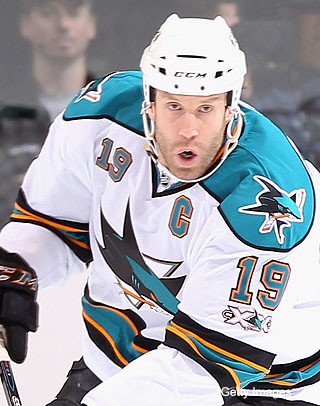 If you haven't noticed, there are a lot of good hockey teams in the NHL -- you'd likely need two hands to count the legitimate Stanley Cup contenders.
If you haven't noticed, there are a lot of good hockey teams in the NHL -- you'd likely need two hands to count the legitimate Stanley Cup contenders.
What's going to separate the eventual champs from the golfers, is their attention to detail. It's all about the little things, at every position, in every zone.
Every player at that level is able to execute the big parts of their job capably, and that stuff is easy for us to see throughout the course of a game — you want your centermen to win faceoffs, you want your wingers to get pucks out along the walls, you want your defensemen to, y'know, defend (perhaps a little better than Tomas Kaberle did on Brandon Dubinsky's game tying goal last night — guessing where the puck is going in the D-zone is not ideal).
But great players take care of the little things that, while often inconsequential, can come back to bite you at the worst times when you're not on point.
The following examples didn't necessarily kill their teams last night, but if you let these habits continue, it's only a matter of time until you roll snake eyes.
Defensemen
Defensemen have a lot to think about out there. When they aren't figuring out coverages down low, making breakout passes and reading plays, they've got to read their own partner too. But when pucks fly towards their net, things get real simple — get body position and get your guy's stick in the air.
On this goal, when Johnny Boychuk moves the puck towards the net, watch Michael Sauer. The first thing he does is lift Gregory Campbell's stick off the ice so he can't get a touch on the puck.
Well done, sir.
Right behind him, Ryan McDonagh is supposed to do the exact same thing with Daniel Paille's stick.
It's not an easy job of course, but these are NHL defensemen — they're expected to execute that job. As a forward, there's nothing more frustrating than being near the net and seeing that perfect pass head towards you (or even that perfect tippable shot) and then -- whack! -- all the sudden your stick is in the rafters.
Stupid D-men.
Fact is, McDonagh has to be better there.
Wingers
I was a winger, and I'll openly admit it's the easiest position to play on the ice. As soon as your team has the puck, you become part of a gang of roving forwards, and on defense, your role could not be more black and white — when the puck is on the strong side, cover your point man. When it's on the weak side, sag back to the slot ... and cover your point man.
When it's anywhere else, get crazy, and cover your point man.
You have to make sure you're on the right side of him on attempted breakouts (something Mark Recchi does poorly on this Vinny Prospal goal), and whatever you do, don't fly the zone when your team doesn't have solid possession.
In this video, Wayne Simmonds goes … I have no idea where.
This is not a complex job. Your team is fighting for playoff seeding. The score is 1-0. So what gives here? Watch the skate he takes after he thinks the puck may leave the zone.
Yeah, not exactly on the right side of Marc-Edouard Vlasic. That's the type of thing that costs you the trust of your coach, and in turn, ice time in big situations.
Centermen
You can't hide at center — you're taking face-offs, you're supporting your wingers on both sides, and what sounds worst of all for a lazy player like me, you're the only guy who really uses all 200 feet of the ice sheet.
In your own zone you're a defenseman, plain and simple. Your team uses three guys low to cover your opponents' three forwards — only given that you want to leave an actual defenseman in front of the net at all times, you're the only guy using all 85 feet of ice width as well — it's a tough job.
But that's the position you play, so do it right. As in, when your opponent has two forwards in front of the net, one of them is yours. You have to engage him, get his stick up (as with the McDonagh example in the first segment), and play with a little intensity to win that battle. You have to do basically the opposite of this.
Here's Joe Thornton in front, "covering" Michal Handzus.
We'll cut Joey T some slack here — it can be tough coming off the penalty kill to make the immediate adjustment back to 5-on-5 coverage, but again — he's a premier NHL center, and he knew the penalty had expired (as demonstrated by him moving into low coverage). It's just some real "meh whatever" effort right there, and suddenly it's 2-1.
Fortunately for the Sharks, they scored another eleventy-four goals last night, and that didn't end up mattering.
***
When teams sit down and watch video on their way into the playoffs, this is the stuff coaches will harp on. Everyone knows where to be by now.
Those little things make all the difference, and in playoff games — close, intense playoff games — they add up. This isn't the time to be backing off your attention to detail. The little things end up being the biggest thing of all.